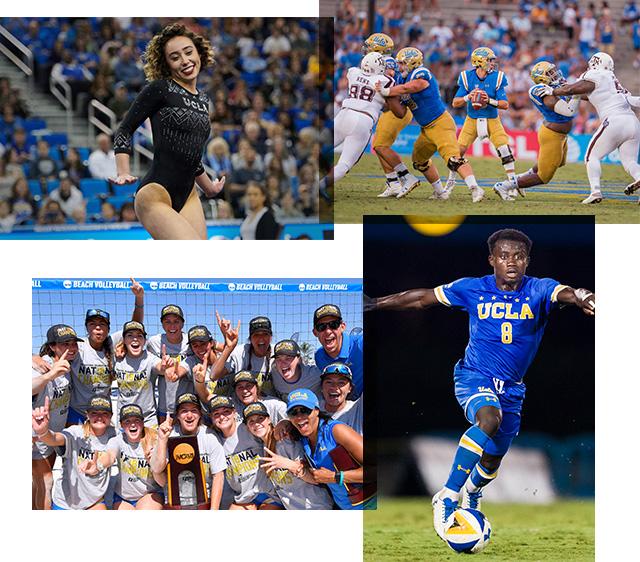The University of California, Los Angeles (UCLA) has injected $30 million into its athletic department in an effort to stabilize operations amid mounting financial challenges. Despite the substantial cash infusion, the department continues to face a growing deficit, raising concerns about the long-term fiscal health of one of college sports’ marquee programs. This development highlights the increasing financial pressures confronting major collegiate athletic departments nationwide.
UCLA Athletic Department Secures 30 Million Dollar Emergency Funding Amid Growing Financial Struggles
In a critical move to stabilize operations, UCLA’s athletic department has secured $30 million in emergency funding from university reserves. This infusion aims to address immediate cash flow challenges caused by declining ticket sales, reduced sponsorships, and the ongoing impact of the pandemic on collegiate sports programs nationwide. Despite this substantial lifeline, UCLA athletics faces a growing deficit that continues to challenge its long-term financial stability. Key programs have reported budget cuts, and there is increasing pressure to explore new revenue streams to offset mounting costs related to facility upgrades and athlete support services.
The administration has outlined several strategic priorities as part of the recovery plan, including:
- Enhanced donor engagement initiatives to boost private funding
- Review of non-revenue sports for potential restructuring
- Investments in digital marketing to increase fan engagement and merchandise sales
| Fiscal Year | Projected Deficit | Emergency Funding | Remaining Gap |
|---|---|---|---|
| 2023-2024 | $45M | $30M | $15M |
| 2024-2025 | $40M | TBD | $40M |
Analyzing the Root Causes Behind UCLA Athletics Deepening Deficit and Budgetary Challenges
Despite the recent $30-million financial infusion intended to stabilize UCLA Athletics, the department continues to grapple with structural budgetary issues that have escalated its deficit. A combination of plummeting ticket sales, rising operational costs, and increased scholarship expenditures has created a perfect storm for the Bruins. Key revenue streams have been weakened, particularly due to decreased attendance at games amid pandemic-era restrictions and ongoing challenges in fan engagement. Meanwhile, costs related to facility maintenance, compliance with NCAA regulations, and coaching salaries have surged, outpacing the department’s ability to generate consistent income.
Several core factors contributing to the financial strain include:
- Diminished sponsorship deals in a competitive collegiate sports market
- Rising costs for travel and recruitment in a hyper-competitive landscape
- Expanded athletic programming with limited immediate returns
| Expense Category | Annual Cost | Previous Year Change |
|---|---|---|
| Scholarships | $18M | +12% |
| Facility Upkeep | $10M | +8% |
| Coaching Salaries | $25M | +10% |
| Travel Expenses | $9M | +15% |
Strategic Recommendations for Financial Stability and Sustainable Growth in Collegiate Sports Programs
To reverse the mounting deficits faced by collegiate sports programs like UCLA’s, rigorous financial oversight combined with innovative revenue diversification strategies is critical. Athletic departments must embrace transparency by regularly publishing detailed financial reports for all stakeholders, aiming to restore trust and attract external investments. Additionally, fostering partnerships with local businesses and tech startups can open new streams of sponsorship and digital engagement, capitalizing on the growing appetite for virtual fan experiences and merchandise sales.
Investment in student-athlete development programs also presents both competitive and fiscal benefits by improving team performance and driving higher game attendance. Administrators should consider reallocating budgets toward sustainable marketing campaigns, community engagement, and facility upgrades that yield long-term returns. The table below outlines key strategic areas along with potential impacts to guide decision-making:
| Strategy | Expected Outcome | Timeframe |
|---|---|---|
| Financial Transparency Initiatives | Increased donor confidence and external funding | 6-12 months |
| Digital Sponsorship & Merchandise Expansion | Diversified revenue streams | 12-18 months |
| Student-Athlete Development Investment | Enhanced team competitiveness | Ongoing |
| Facility and Marketing Upgrades | Improved fan engagement and attendance | 12-24 months |
Closing Remarks
As UCLA’s athletic department grapples with a growing financial deficit despite the recent $30-million infusion, the challenges ahead remain significant. While the lifeline provides temporary relief, stakeholders acknowledge that sustainable solutions will require careful fiscal management and strategic planning to ensure the long-term viability of one of college sports’ most storied programs. The coming months will be critical as UCLA seeks to balance competitive ambitions with economic realities amid an increasingly complex collegiate athletics landscape.





